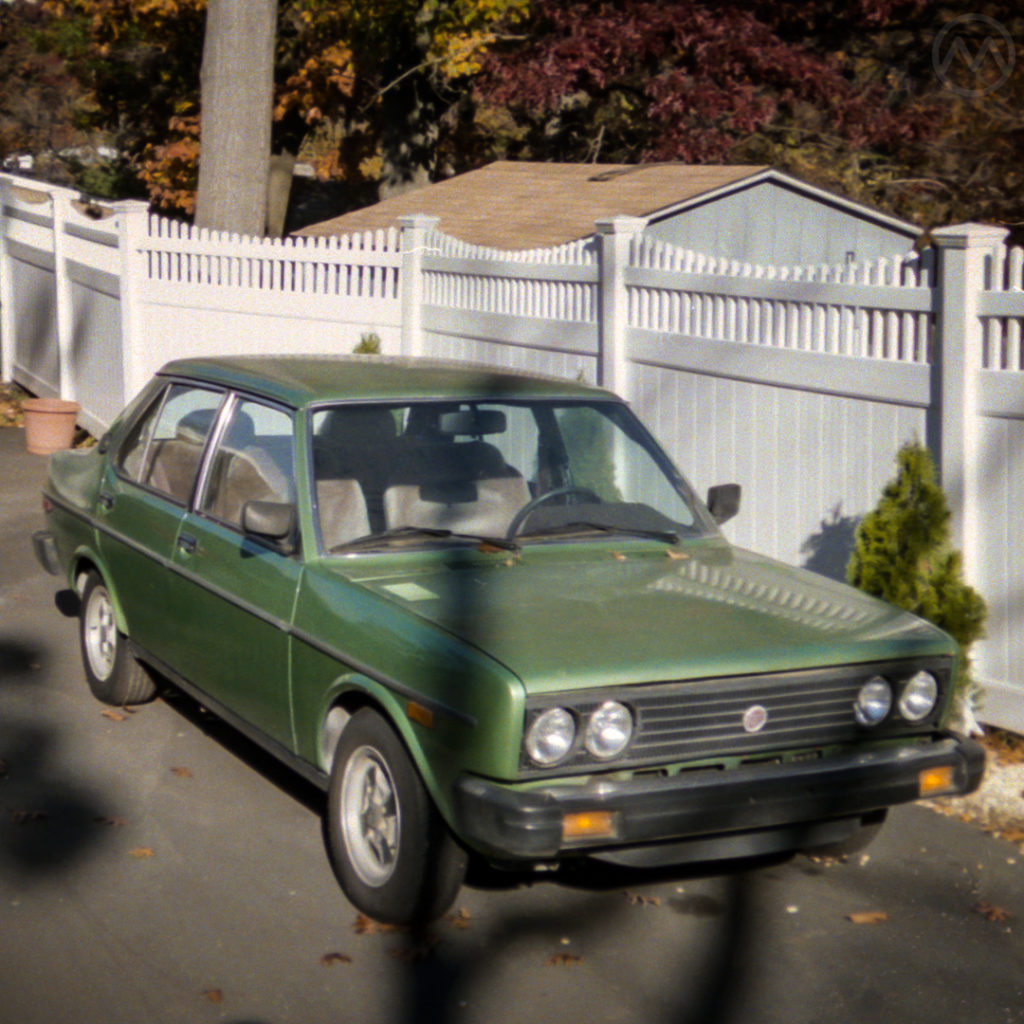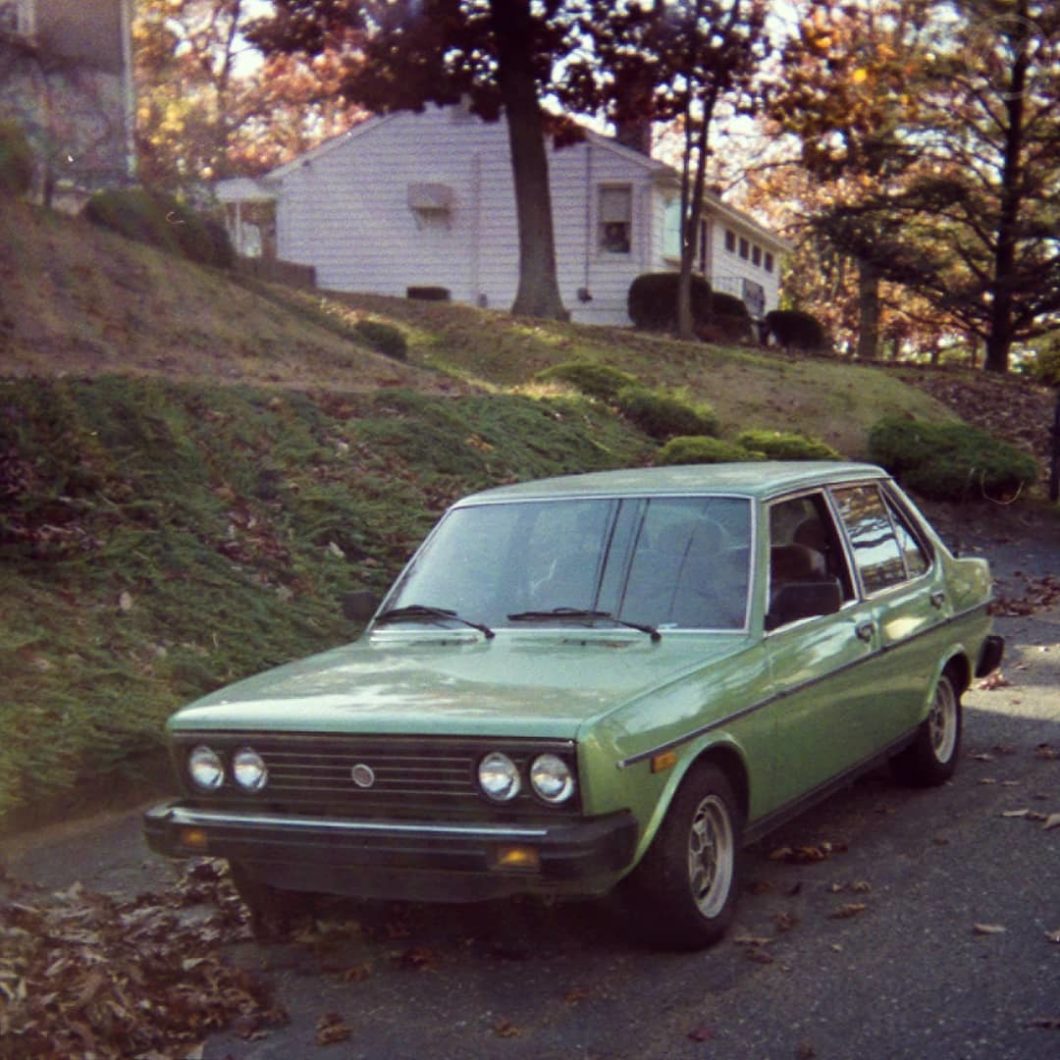A trip to the film archives takes us back today to OldMotors’ very own 1981 Fiat Brava, then just an unloved old car from a largely forgotten make.
Better known as the 131, Fiat changed the name in the USA in 1978 to “Brava” and “Super Brava” before settling on the former as the only name for 1979-81.
By then Fiat was in deep trouble in the USA and the late Brava was a much slower seller than the early 131 – despite being faster and more reliable thanks to the addition of the 1,995-cc Fiat twin cam and Bosch fuel injection. This ‘81 was one of the very last Bravas sold in the USA – it was sold new in Phoenix, Arizona – which is probably why it didn’t dissolve like so may Fiats of that era.
The Fiat 131
The 131 first bowed at the 1974 Turin show in October of that year, a particularly trying time for Italy as the fallout from OPEC, coupled with strikes, hyperinflation, and poor monetary policies threw Italy into a severe recession. Not exactly the best circumstances in which to launch a mid-size family car.
Nevertheless, the new car was very well received. Though conventional in every way like the 124 it replaced, the 131 was good at just about everything design wise – good neutral handling, reasonable fuel economy even if the small-engined models were slow, and loads of room. Some evidence of cost cutting was there – critics tended to focus in on the rear brakes, drums now instead of the 124’s discs, but the car was very competent.
The rigid new shell new shell and new styling, done at Fiat Centro Stile under Gian Paolo Boano as with the larger 132, were handsome and modern.

Under the hood it inherited the 124’s excellent family of engines – both the OHV version (1.3 and 1.6L now) and (eventually) the Aurelio Lampredi designed Fiat Twin Cam.
Not long after its debut, the 131 was also reworked into the rally-winning 131 Abarth, which greatly increased its profile (and is the most famous 131 today). The heart of the 131 Abarth was a modified twin cam, as many Fiat and Lancia rally cars would use for the next few years. Boano’s handsome 2-door sedan was exaggerated for the 131 Abarth by Bertone, who designed the wide-body look of the Abarth.
The regular 131s came in three body styles at first – the 2-door and 4-door sedan, and the 4-door “Panorama” wagon. In 1979, Fiat added the “Marengo,” a 3-door “van” version for commercial purposes. The Marengo was never widely seen outside of Italy – and certainly not part of the U.S. model lineup.
The 131 was built at Fiat’s Mirafiori complex, freshly reengineered just for the car, to which it sometimes gave its name – in Italy it was the 131 Mirafiori or just Fiat Mirafiori. It would have a long life outside of Italy, too – being built in Colombia, Egypt, Ethiopia, Indonesia, Spain, Turkey, and Venezuela – though some of these were local production of the Turkish version, the Tofaş Şahin, a later version of the car originating in Turkey.
Ultimately, 131 variations were built until 2010, but the car’s time in the USA was much more brief. In the USA, it replaced the 124 for 1975, and lasted until the end of 1981 – though you could still buy a handful of leftovers in 1982.
Brava and Super Brava
1975 was to be Fiat’s best-ever year here, with 100K cars sold. Though it’s the sports cars everyone remembers today, it was the 128 that was the big seller at the time – fresh off the OPEC debacle and available at very low prices thanks to friendly exchange rates (Italy’s economic problems and falling currency were good for exports, but bad at home). The 131 also helped contribute to the volume and was generally well received by the press.
The U.S. 131 came only with a 1,756-cc twin-cam (also federalized for the Spider and Lancia Beta), a larger and more powerful engine than the Euro cars at that time, although it wasn’t long before, given the success of the Abarth, faster 131s arrived in Italy.
In 1978, it was upgraded to the 2-liter, with FI optional in 1980 and then made standard in 1981. They came with a 5-speed or a GM TH180 automatic (from the Chevette) as this car had (it had awful gearing, more on that in a minute). It was a sharp handler and sold well at first.

The Brava was a great car with a manual transmission and injection – reasonably well powered (though not as fast as the Euro-spec Mirafiori Racing, which also used the 2-liter twin cam), and easy to control.
We usually don’t disparage Automatics, but in this case, the Auto had some real limitations – namely the 4:11 rear end which was good off-the-line but terrible for highway driving. Even lower ratios were used in some European 131 diesels, which presumably spent much of their time in town and not out on the Autostrada.
The Brava/Super Brava actually did sell a little better in 1978/1979 than it had in 1976, but the trend for Fiat overall was worryingly negative. 1979 was a great year for imported car sales in the USA in part because of OPEC II and Fiat had a brand new model – the Strada – to help capture economy car sales (there were also still 128s in inventory at big discounts).
Nevertheless, sales fell below 60,000 units and would never recover.
The end of Fiat in America
Unfortunately, poor quality control, exacerbated by labor unrest and poor quality materials, started to erode Fiat’s position in the U.S. at a time when more and more people were purchasing largely trouble free (but equally rust prone) Japanese cars. None of the Fiats fared very well in the eyes of Consumer Guide’s long-term studies.
Quality control issues and indifferent dealers (Fiat dealers were either hard-core Italian car shops or “also ran” franchises) eventually drove buyers away (as detailed in our story about the Fiat Strada).
Only about 14,000 of Fiat’s 1979 U.S. sales were Bravas. In 1982, Fiat’s last full year of U.S. sales until 2011, only 15,000 Fiats of all types were sold in the USA. The Brava had been withdrawn in early 1981 thanks to slow sales.
Abroad, the story was different – with the “series 3” 131s arriving in mid-1981 with a fresh round of updates (which were not federalized).

The car was now fighting a bunch of newer front-drive designs, but was still generally well-liked. Ultimately it was replaced by the Strada-derived Regata in 1983, although the wagon continued into 1984. In global markets, it had different names in this period including Supermirafiori and Super Brava. The S3 131 also got a small number of “Volumetrico” versions, with a 2-liter supercharged twin-cam.
Many Bravas dissolved or fell apart, but this car was a gem – and far too nice to park on New York City streets where it lived at the time. It was soon sold to a gentleman who drove it home to San Francisco and is now whereabouts unknown.
We posted this today to celebrate a specific Instagram Anniversary that you can check out here.

